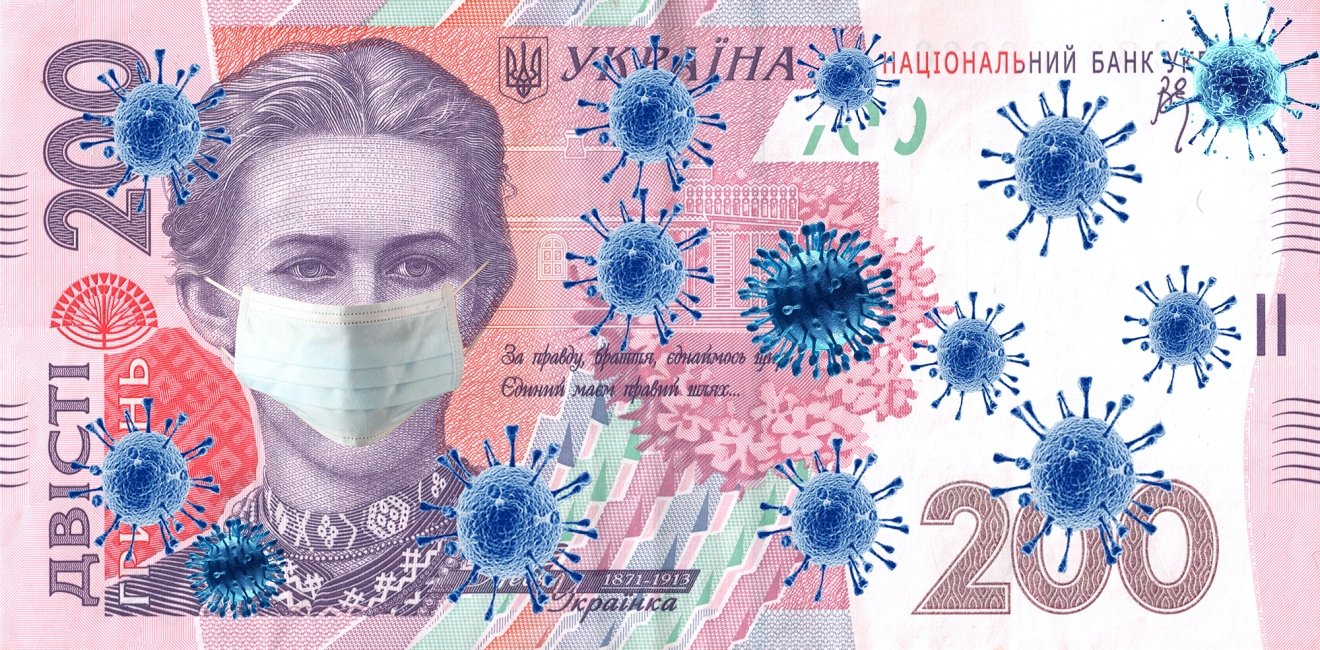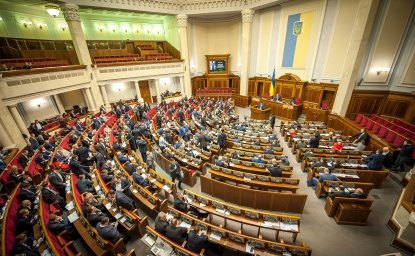
A blog of the Kennan Institute
BY ANDRIAN PROKIP
The COVID-19 epidemic reached Ukraine when the national economy was already in poor condition. The effects of the recently instituted quarantine, including slowed or stopped production and a decline in trade, can only worsen the situation. Authorities do not have enough economic resources to address the converging crises in the health and economic spheres. The way forward will likely involve, in addition to international aid, both short-term measures to ease the immediate impacts of the pandemic and longer-term planning to build a more robust economy and inoculate it against future shocks.
Officially, the COVID-19 epidemic, now pandemic, reached Ukraine on March 3, 2020. The first person identified with the infection had visited Italy and Romania before returning home. On March 19 the government reported that in addition to foreign sources of infection, Ukraine had internal sources as well. By now, 97 persons have been identified with COVID-19 infection, and three have died as of this writing.
By mid-March, it had become clear that the pandemic was of epic proportion worldwide and extreme measures would be needed to slow the spread of the virus and mitigate its effects. Beginning March 12, the government ordered a three-week “soft” quarantine, closing all educational institutions and placing restrictions on public gatherings. Some cities—Kyiv, Chernivtsi, Ternopil—demanded closure of all public locations and stores other than groceries and pharmacies. The government has suspended metro service in all cities and restricted interregional and international transport operations, while simultaneously recommending that companies shift to telework.
Ukraine’s Economic Picture Entering the Pandemic
The pandemic and the associated preventive measures will assuredly have a negative impact on Ukraine’s economy, which had already started slowing down at the end of 2019. Among the causes were a global drop in prices of and demand for iron ore and steel, which contribute an important share of Ukraine’s GDP. In addition, by the end of 2019 the Ukrainian hryvnia had strengthened too much, and that made exports less profitable. In January 2020 industrial production fell 5.1 percent (year-over-year comparison).
Another hit to the Ukrainian economy came with the collapse of oil prices on March 9 and the ensuing panic affecting the financial indexes, which pushed devaluation of the hryvnia. The National Bank of Ukraine has tried to control the situation, but its impact is limited.
For several reasons, then, Ukraine’s weakening economy is very vulnerable to negative pressures from the COVID-19 pandemic, especially in the context of the emerging global recession. There are ample, and measurable, grounds for concern. As just one indicator, during the first days of the quarantine, electricity consumption in Ukraine dropped by 5 percent, and is expected to reach an 8 percent decline. (For comparison, in Italy the demand for power has decreased by 18 percent, two weeks after the start of a strict quarantine.) Electricity use is a good indicator of the state of the economy and of economic trends. This indicator shows that Ukraine’s economy has slowed.
The effects of the pandemic on the economy will also be influenced by the duration of the quarantine. Currently the soft quarantine is scheduled to be in place until April 2, though officials indicate it may be extended for at least an additional month. Thereafter GDP growth will be determined (in part) by a lag in renewed production and consumption. As a further complication, Ukraine’s export-oriented economy depends more on international consumption than on domestic. So the lag will depend on a factor over which the Ukrainian authorities have no control.
Effects on the Economy
The Ukrainian Institute for the Future, where I work, has developed its own assessment of how the epidemic may affect Ukraine’s economy. According to our assessment, the decrease in GDP may amount to 5–10 percent, depending on the duration of the quarantine and the corresponding reduction in economic activity (some of which may simply be deferred). The most vulnerable sectors include trade (where the decrease may reach 20–30 percent), heavy industry (10–30 percent), energy (5–12 percent), freight services (15–20 percent), and tourism (by as much as 60 percent). The budget deficit may reach 4.9 percent of GDP, compared to 1.8 percent in 2019.
The Ukrainian government is well aware of the threat to the economy posed by the pandemic and is planning steps to reduce the negative impacts of the quarantine and support businesses. For instance, the government has already deferred some tax payments, the submission of financial reports, and utility payments for businesses, along with personal tax declarations for individuals. As well, big business appears ready to support the nation during the crisis. On March 16, President Zelenskyy met with some of Ukraine’s business tycoons in his office to explore how they might relieve some of the burden on the health care system through donations of funds and equipment.
But all these measures in aid of economic survival are short term in nature, designed to temper or ease immediate losses during the quarantine. To tackle the economic crisis over the longer term, the government needs to put in place a different set of policies. Some of Ukraine’s regional neighbors have already undertaken this exercise. For instance, the Estonian government plans to spend 8 percent of GDP to support its companies and entrepreneurs. Polish authorities will spend $50 billion to alleviate the effects of the pandemic, or about 8.4 percent of GDP. That 8 percent should be a benchmark for Ukraine’s government as well.
Of course, Ukraine does not have same resources as the post-socialist states. Our government will most likely look for international aid, including aid from the IMF. But more important is that it prepare to create favorable conditions for boosting production after the twin crises, and dedicate funds to national development projects with high added value. In this way the government should be able to wed its crisis response to a longer-term vision for the country’s prosperity.
The opinions expressed in this article are those solely of the author and do not reflect the views of the Kennan Institute.
Author

Director, Energy Program, Ukrainian Institute for the Future

Kennan Institute
After more than 50 years as a vital part of the Wilson Center legacy, the Kennan Institute has become an independent think tank. You can find the current website for the Kennan Institute at kennaninstitute.org. Please look for future announcements about partnership activities between the Wilson Center and the Kennan Institute at Wilson Center Press Room. The Kennan Institute is the premier US center for advanced research on Eurasia and the oldest and largest regional program at the Woodrow Wilson International Center for Scholars. The Kennan Institute is committed to improving American understanding of Russia, Ukraine, Central Asia, the South Caucasus, and the surrounding region through research and exchange. Read more

Explore More in Focus Ukraine
Browse Focus Ukraine
Talking to the Dead to Heal the Living

Ukrainian Issue in Polish Elections


